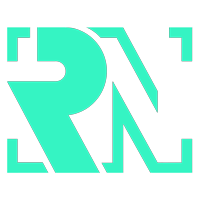Animation Lecturer in Pursuit of More Inclusivity in Industry Jargon
Key Points:
- An Edinburgh Napier University (ENU) lecturer, Jon Mortimer, is aiming to foster inclusivity in animation, visual effects, and gaming.
- Mortimer’s remarkable initiative involves identifying industry-specific terms that require an equivalent sign in British Sign Language (BSL).
- The award-winning animator was driven to this exceptional endeavour by his personal experiences of trying to master BSL alongside his 4-year-old son.
- The search for a common language in the animation field can make the industry more accessible to those with hearing disorders.
Hot Take:
Let’s take a moment to hand (get it, hand? BSL uses signs? I know, my puns are a ‘sign’ of genius!) it to Jon Mortimer, this award-winning Scottish animator who is now swinging at inclusivity in a way that could rival a Pixar plot twist. His mission to make technological and industry-specific jargon accessible to all, especially the hearing-impaired community, is as inspiring as it is trailblazing. At the end of the day, whether you’re inside a lightbox or on the coding battlefield, we all need a way to understand and communicate the ‘jargon jungle’ that makes up our industry. So here’s to fewer ‘Lipstick on a Rig’ and more ‘signs’ in the playbook. Animation for all, and all for animation!
Breathing Life into Animation, VFX and Gaming for the Deaf Community: An Edinburgh Napier University Initiative
Jon Mortimer, a renowned animator and lecturer from Edinburgh Napier University (ENU), aims to revolutionize the animation, visual effects and gaming industries by generating exclusive British Sign Language (BSL) signs for industry-specific jargon.
Triggered by his journey of learning BSL with his 4-year-old son, and assisting deaf students at ENU, Jon initiated the community project – Animsign. His vision for the project is to identify industry-based words in the animation realm that lack a corresponding BSL sign.
To share his idea with the wider world and for better comprehension, Jon crafted an animation video that vividly illustrates his concept.
A trial run of Animsign at a conference in Scotland identified 74 terms in dire need of distinct signs, including WIP (work in progress), pipeline and props.
In an attempt to build a BSL glossary solely dedicated to animation and gaming jargon, Jon beckons members of the deaf community, teachers, and animation and games professionals who would love to be a part of the Animsign journey.
Since over 70 million individuals worldwide communicate through sign language, having a broader range of BSL terms in animation and gaming fields can potentially create new career avenues for deaf and hard of hearing people.
Animation beginners are significantly disadvantaged by gaps in industry jargon. With Animsign, our aspiration is to bridge the communication gap between the animation and games sectors and the deaf community. As a family, we started learning BSL for my son, which unlocked ways for him to express himself beyond his limited vocabulary.
To bring about meaningful change, it is imperative that we colaborate with the deaf community, not just work for them – an ideology that has been the cornerstone of our project, along with active participation of deaf artists. We conjecture that such a support system will make learning animation more inclusive.
Potential job roles in animation are not confined to animators. This venture could become a pathway to a plethora of interesting careers for creative minds who harbour interesting stories.
-Jon Mortimer
Jon’s ultimate goal is to further his research by forming advisory groups of animation & games professionals, educators and sign language users to establish a lexicon of new signs. He invites and encourages everyone to connect with him to discuss his breakthrough research.
Original article: https://www.skwigly.co.uk/animsign/

